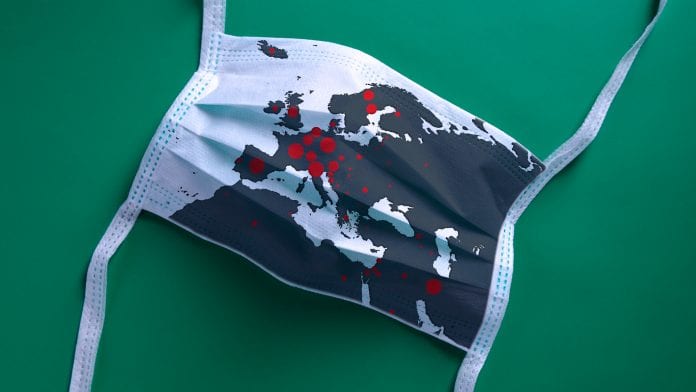
As a leading technology partner to the Italian government, Sara Mintrone, Head of Product Management at Dedalus, highlights how Italy’s approach to testing and surveillance can help the UK avoid a second wave of the pandemic.
With the UK now firmly in the recovery stage and as the nation overcomes the peak of COVID-19, there needs to be a crucial focus on containment – to prevent a second wave of the virus, and importantly, minimise the impact on society, the NHS, and the economy. To do this effectively – as the test and trace programme is rolled out nationally – the UK must reflect on lessons learned.
Not only from its own response to the pandemic, but from other countries’ actions, particularly its counterparts in Europe. This is especially important given the UK death toll remains the highest in Europe, exceeding Italy which was once the epicentre of the pandemic and has recently seen a sharp fall in infection rates.
Learning lessons from Italy
Whilst a lot has been written about the devastating impact of the virus in Italy, the ‘screening to healing’ approach which has been deployed in some regions, including Puglia in the South, have shown to be effective. Yes, mistakes were made in Italy – as is true of any country – but successes were also achieved, and the UK should learn from both.
With the pandemic hitting at such speed, both countries utilised what was readily available to them, including technology. But this didn’t mean ‘just getting by’ – the scale and pace at which IT has been adopted across the NHS should be applauded. And the same can be said for Italy – their swift decision to introduce a full-spectrum of services from pre-screening to wellness monitoring, using the support of digital is paying off in terms of the nation’s recovery.
End-to-end testing and surveillance
In the absence of a suitable method of tracking the virus, Italy utilised existing IT to establish a pre-screening process. The combination of an online public questionnaire and data extracted from GP medical records has enabled different population risk factors to be identified and people categorised accordingly. This information is then fed into a newly created regional command centre – staffed by healthcare professionals – who can use a data analysis dashboard to action the most appropriate response for that individual, whether it’s getting tested, self-isolating, going to hospital, or being cared for at home.
With the outputs of the command centre being shared between primary and secondary care providers, this approach has enabled the health service in Puglia to introduce a systemic plan to minimise hospital admissions and prevent these services being overrun. Plus, having information from the hospital’s electronic patient records and remote monitoring devices in patients’ homes feed into the command centre, the health service can continue to offer recovery support at home.
Whilst the benefits of this approach are only just being quantified, clinicians are already reporting on how it’s streamlining workflow processes across care settings, minimising pressure on key services, and enabling other non-COVID-19 related services to continue uninterrupted.
Patients are also reporting on how pleased they are with the interactions with staff; they like not having to go to hospital unless absolutely necessary and they still feel fully involved in their care. And with Dedalus also working with the governing bodies in Sicily and Campania to replicate the model, these benefits are expected to be countrywide.
This end-to-end approach is providing vital information about the transmission of the virus and helping manage the demand on services more effectively at a regional and national level. It’s also ensuring informed steps can be taken to implement targeted interventions to protect the public’s health, but equally as important, it’s helping determine a more accurate forecast for any future spread and second wave of the virus.
Test and trace
It’s why the focus in the UK to test more patients and pilot the contact tracing app are welcomed initiatives, particularly given the data exchange between them and the NHS 111 database. However, if we are to learn lessons from Italy, more needs to be done. Testing for example, can only show if someone actively has the virus or has been exposed to it – little is in place to screen other groups at risk, or to co-ordinate the different levels of support to manage the pressure on services.
Likewise, until the tracing app is rolled out nationally, becomes part of a wider approach to diagnosis (such as virology swab testing) and is integrated with the different initiatives adopted by individual hospitals to trace the virus, the UK won’t have a holistic view.
Moreover, neither of these two initiatives tackle the final element of the pathway – supporting patients during the healing process, after they have left hospital.
Preventing a second wave
Our generation was not prepared for COVID-19, and so we have had to learn from each other. The speed at which Italy and UK adopted digital innovation is impressive. However, the virus isn’t going away, at least not any time soon. And the situation in Italy shows that a holistic strategy needs to be in place to triage and treat patients and minimise the impact on hospitals. It’s also shown that information sharing is key, and an interoperable end-to-end approach is at the core of this.
In Puglia, the government quickly recognised that encompassing a 360 degree approach was crucial for patient care, capacity planning, and future forecasting. And Dedalus is immensely proud to have been able to play a role in Italy’s recovery.
If the UK doesn’t adopt a similar approach during the recovery phase and introduce full measures to address testing and monitoring, then, unfortunately, the risk of a second wave could become a stark reality.
Sara Mintrone
Guest author
Head of Product Management
Dedalus










